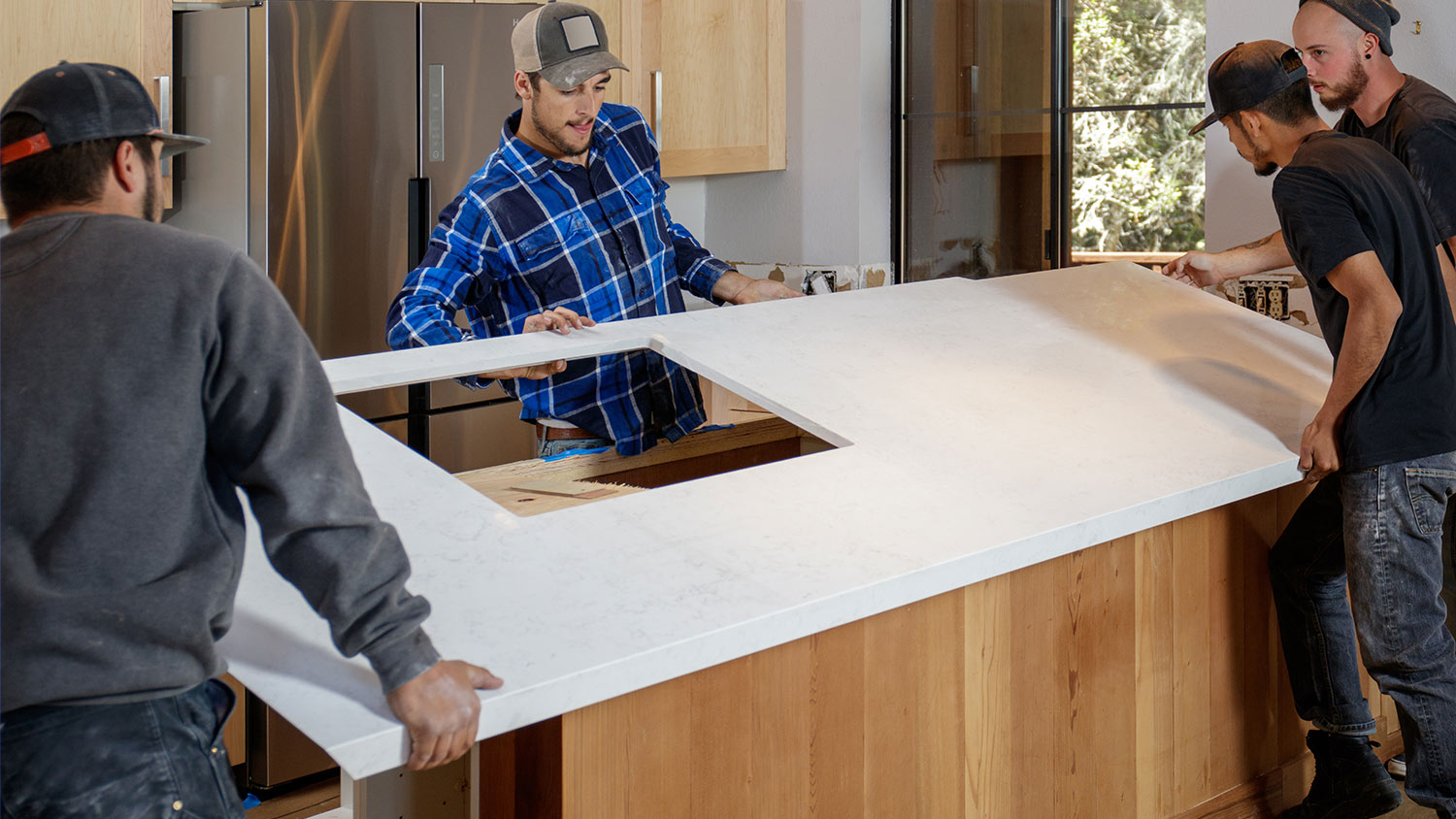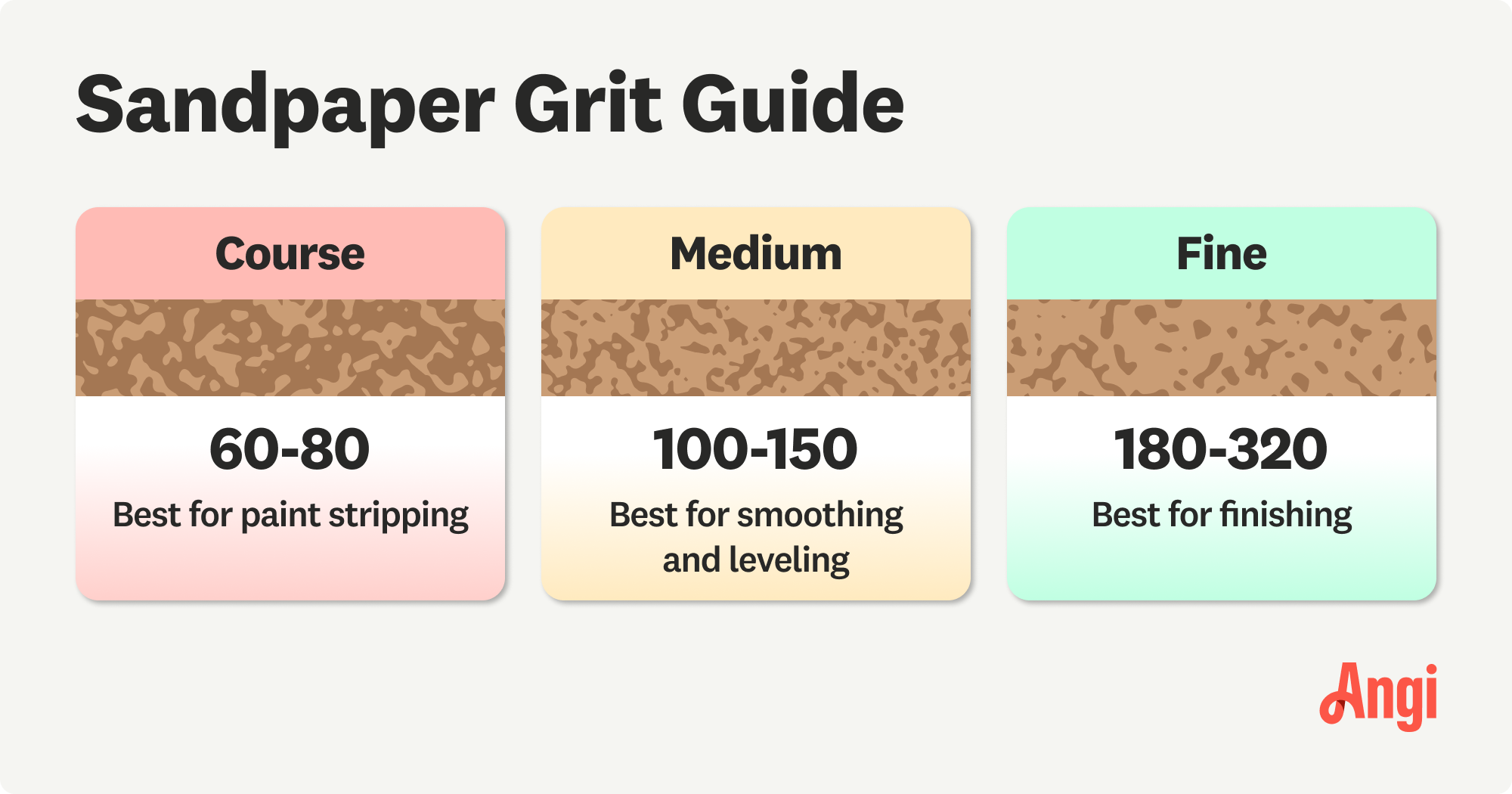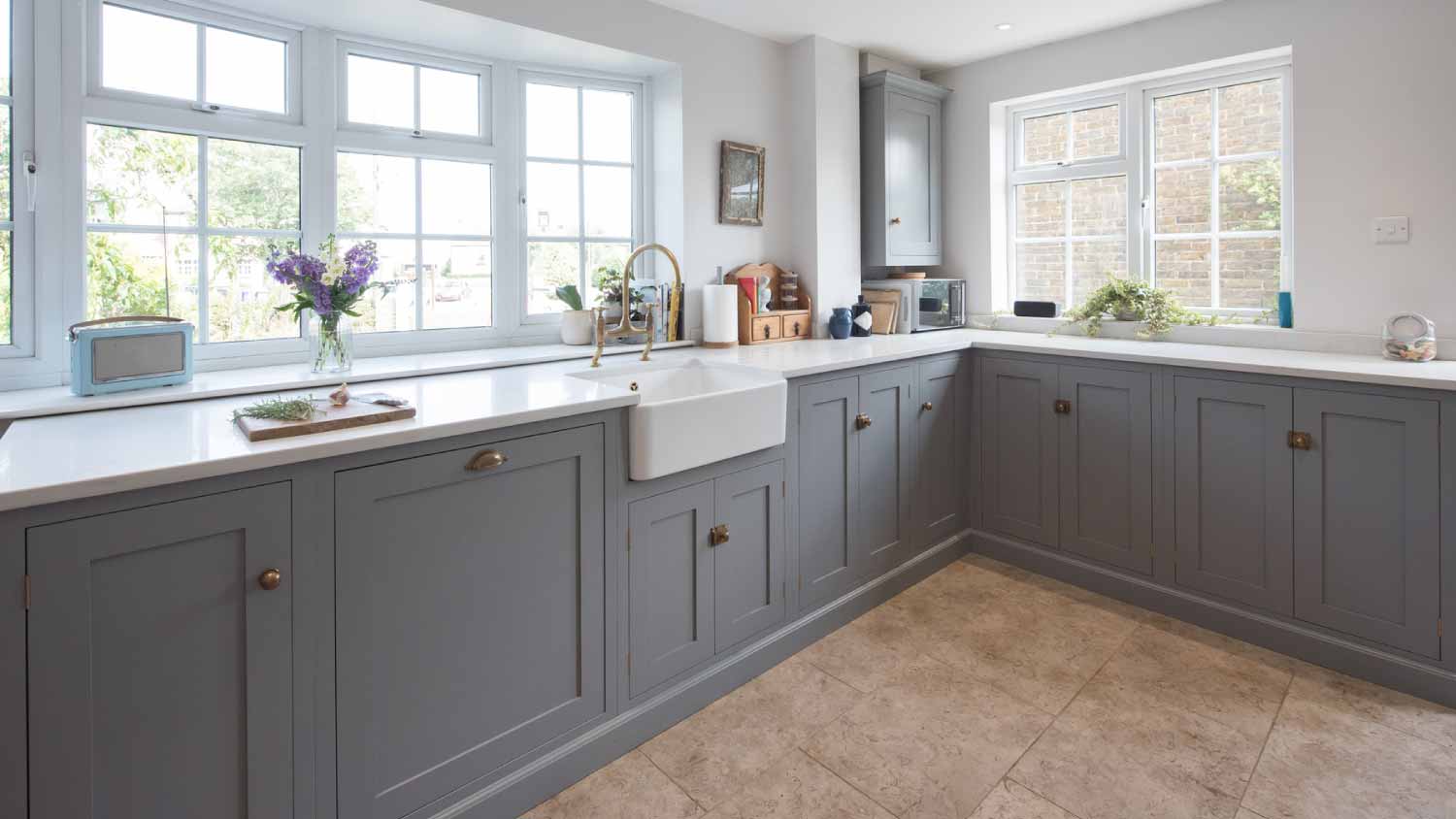
Discover cabinet installation cost estimates, including average prices, key cost factors, and tips to save on your new kitchen or bathroom cabinets.
Reset your worn wood countertops and make them look new


While finishing butcher block countertops is not a difficult job for a DIYer, it can be extremely time-consuming.
A countertop contractor will know exactly which finishing products to use that are safe for food preparation areas.
Butcher blocks are heavy and can be easily damaged when moved, so if you need countertop installation, it’s best to hire a pro.
Finishing a butcher block countertop is as simple as preparing the surface and applying a few coats of oil, sealant, or stain. These materials differ in look and function, but they all highlight the natural beauty of the wood while removing stains and protecting the surface from future damage. Learn how to finish your butcher block countertop as a DIY project.
Finishing a butcher block countertop offers two main benefits: Maintaining a food-safe prep surface and removing stains and other damage from regular use.
One of the pros of butcher block countertops is the option to cut and prep food directly on the surface, but only if the finish is food-safe. Food prep also creates messes, and wood is prone to stains, scratches, dents, and knife marks. Finishing your butcher block helps protect it from damage, while refinishing can help remove damage and restore the look of your surfaces.
The only cost to finish a butcher block countertop is that of the materials you use:
Mineral oil can cost as little as $10 per bottle.
Stain is about $20 per can.
Polymerizing oil will likely cost around $40.
Polyurethane finish costs about $70 per can.
Butcher block countertops cost an average of $50 to $150 per square foot. Costs vary mostly by the type of wood used and whether you purchase the surface unfinished or prefinished.

If finishing a new, unfinished butcher block countertop, first wipe away debris using a clean cloth. If refinishing an existing butcher block, you must clean the surface thoroughly, scraping away any dried-on food particles with a plastic scraper. Then, remove any stains.
To remove light-colored stains, mix salt and lemon juice into a paste and apply to the stains, scrubbing with a cut lemon, stiff brush, or scouring pad. Let the paste dry overnight, then remove the salt in the morning using a wet cloth.
To remove darker stains, mix one tablespoon of hydrogen peroxide and one cup of warm water. Dip a clean cloth into the solution and dab the stains with it. Dip another clean cloth in white vinegar and dab the stain again. Rinse the surface and pat dry, then let it sit at least overnight before moving on to finish the surface.

How you finish a butcher block countertop will depend on how you plan to use it. There are several food-safe finishes for those who use their butcher blocks for food prep. There are also water- or oil-based finishes that aren't food-safe but offer long-lasting protection and reduce maintenance needs. Always start with a clean surface.
Food-safe mineral oil is a conditioner that gives wood a matte sheen and helps repel stains, although it won't repair surface wear unless combined with other materials like beeswax.
Pour a small amount of mineral oil on part of the butcher block.
Rub the oil into the surface with a clean cloth.
Repeat this process until you've covered all surfaces, including the sides and ends.
Wipe off any excess oil.
Let the oil soak in for 30 to 60 minutes.
Repeat steps one through five until the wood no longer absorbs the oil.
As polymerizing oils dry, they bond to the wood to fill and seal damaged and porous areas. Examples include products that contain tung oil, walnut oil, and linseed oil. Products are available in different colors and sheen levels. Many of these products, such as Waterlox, provide application instructions roughly similar to the following:
Pour a small amount of oil onto part of the butcher block.
Rub the oil in with a clean cloth.
Repeat this process until you've covered all surfaces, including the sides and ends.
Let the wood absorb the oil for 15 minutes.
Buff the butcher block surface with another clean cloth.
Allow 24 hours to dry.
Repeat steps one through 6 to apply a second and third coat.
Water- or oil-based polyurethane helps seal the pores in natural wood and prevent stains, watermarks, and other cosmetic damage. It requires more work to apply than oils but offers better durability.
Using 180-grit sandpaper, sand the countertop surface manually or with an orbital sander, including on the sides and ends. Sand with the grain.
Repeat step one using progressively finer sandpaper until you reach 220- to 300-grit.
Thoroughly wipe the countertops clean and remove any dust with a utility vacuum.
Slowly mix your sealant with a stir stick.
Apply the sealant with a paintbrush, slightly overlapping each stroke. Go over each area just once.
Let this first coat dry for 24 hours.
Gently sand the surface again with 120- to 200-grit sandpaper.
Wipe off dust with a clean cloth.
Apply the second coat the same way you did the first.
Repeat the process of sanding, cleaning, and applying sealant until you've applied at least three coats.
Don't use the countertop for one to two days to allow the sealant to cure. After that, use it lightly for the first week before resuming regular use.

Most stains are not food-safe and are best suited to countertops you don't intend to use for food prep. If you want to use a surface for food prep, look for a product that blends stain with food-safe oils or use another method in this guide.
Ensure your work area is well-ventilated, and wear personal protective equipment.
Using 220-grit sandpaper, sand the entire countertop manually or with an orbital sander, including the sides and ends.
Wipe the countertop surface with a clean cloth and use a utility vacuum to remove dust.
Use a clean, slightly damp cloth to wipe again and remove any remaining dust.
Allow the butcher block to dry completely.
Using a paintbrush or clean cloth, apply stain with the grain of the wood, slightly overlapping each stroke.
Use a clean cloth to remove excess stain.
Allow the stain to dry per manufacturer recommendations.
Repeat steps six through eight to apply additional coats.
Applying a sealer to porous counters helps prevent damage like stains, watermarks, and etching. Natural stones, like granite, marble, and sandstone, and concrete and wood counters require regular sealing. Your countertop installer can tell you how often to seal your counters for the best results.
Proper butcher block maintenance depends on the finish used. Stains and sealants typically list care instructions on the product label.
If you choose a mineral or polymerizing oil finish, clean your countertops using mild dish soap, water, and a clean cloth. Sanitize your countertop using white vinegar, and avoid harsh chemicals. You'll need to reapply the oil weekly for the first month or two after the initial application and then monthly.
If food sticks to your countertop, use a plastic sponge or scraper to remove it as soon as possible to avoid stains. To clean stains from a countertop, use a lemon juice and salt paste for light stains and hydrogen peroxide for dark stains. Follow the finishing instructions for any of the methods above to refinish the surface to look new again.
Finishing a butcher block countertop is a simple DIY project, even for beginners. The only cost is for tools and materials, which can cost as little as $10.
However, full countertop installation and finishing is another story. Butcher blocks are heavy and difficult to move. Without installation experience, you risk scraping or otherwise damaging the material. If you need countertop installation, contact a local countertop contractor. Expect to pay between $1,200 and $5,000 on average.
From average costs to expert advice, get all the answers you need to get your job done.

Discover cabinet installation cost estimates, including average prices, key cost factors, and tips to save on your new kitchen or bathroom cabinets.

Kitchen islands are multipurpose workhorses in your kitchen. When looking to add one to your home, you should consider its size, materials, and its primary use in your home. Learn about the price of kitchen islands and their different features.

Butcher block countertops are a popular and durable choice for active kitchens. Learn how much it costs to install butcher block counters and what factors may affect pricing.

Is this trendy material all it’s cracked up to be? Not if it cracks from a poor installation! This guide will help you weigh concrete countertop pros and cons.

Accurately measuring your kitchen countertops is a key part of the ordering and installation process. These steps teach you how to measure kitchen countertops to the exact inch.

Cracked, chipped, and stained countertops can make your kitchen look drab. Learn how to repair kitchen countertops to bring your kitchen back to life.